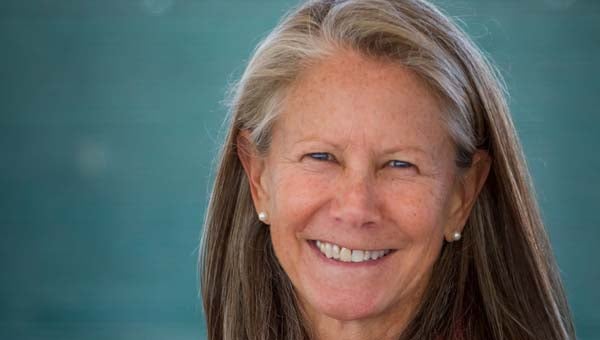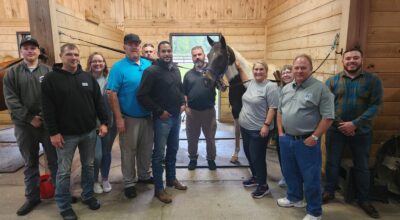The Next 90 Years: TR&HC sets a course for the future
Published 12:21 pm Thursday, December 17, 2015
Written by Judy Heinrich for
Life In Our Foothills, December 2015
Since its founding in 1925 as one of the area’s first community service organizations, Tryon Riding & Hunt Club has been an important contributor to life as we know it in the Carolina Foothills. TR&HC events like its 87-year-old Charity Horse Show and 70-year-old Block House Steeplechase continue to attract crowds and boost the area’s economy. Facilities like Harmon Field and Foothills Equestrian Nature Center (FENCE), both developed by TR&HC, provide venues for equestrian and other activities, and green space that’s open to everyone. The club’s contributions to a wide range of non-profits and its academic scholarships, dating back to 1982, support the organization’s founding mission of “preserving the equestrian tradition and general well-being of the area.”
But while TR&HC’s mission has never wavered, its ability to fulfill it was certainly tested in its ninth decade. Like most small non-profits, TR&HC was hit hard by the great recession. Donations were down, as were horse show entries and proceeds from other events. Most critical, TR&HC’s headquarters building in Tryon, which it owned, lost its small-business tenants during the downturn and was in danger of foreclosure.
It was at this point that long-time board member Nancy Z. Wilson was asked to take the position of TR&HC president. “I really had to think hard about accepting that challenge,” she recalls today. “It felt to me like taking over as CEO of a faltering company. What could we do to pick the club up? How could we remain true to our history and community? We wanted to focus on growth of our programs but our first priority had to be taking care of finances.”
When she did agree to take on the leadership role as of January 2013, her first priority was the HQ building. Letting it go into foreclosure was an option some recommended but Nancy and the TR&HC board felt it was the wrong thing to do. Instead, they entered a year-long negotiation with the building’s lender that resulted in paying a reduced balance and giving the bank their deed. Longtime TR&HC members Roger and Jennifer Smith offered the use of a building at their Green Creek Equestrian property, which is where TR&HC’s office is now located.
With the building issue resolved, Nancy and the board focused on implementing changes designed to build on the organization’s original community service mission. Their goal was not only to get out of financial difficulty but to ensure that TR&HC was stable, profitable, and poised for long-term sustainability and growth.
No doubt many in the horse community had heard rumblings of difficulties within the organization over recent years. So it’s good to share some of the strategies implemented between 2013 and 2015 that have positioned the Tryon Riding & Hunt Club for its next 90 years.
• Long-term contract with Tryon International Equestrian Center. This agreement is allowing TR&HC’s five historic horse shows, including its 87-year-old Charity Show, to be administrated by a world-class facility. This ensures the shows’ long-term sustainability and keeps them in Tryon where they can continue to be enjoyed by locals as well as a much broader audience. At the same time it relieves TR&HC of the massive administrative responsibilities the shows involve, so it can focus on developing its other events and community programs.
• Capital campaign to improve infrastructure at FENCE. Even with its five hunter/jumper shows having moved to TIEC, TR&HC remains FENCE’s historic venue partner for such events as its Block House Steeplechase – the largest one-day draw of visitors to the Foothills area – as well as its Annual Horse Trials, HT Schooling Days, and clinics. As it has since FENCE’s inception, TR&HC maintains a capital campaign to support such FENCE improvements as maintaining its infrastructure, opening up new land for the cross-country course, and installing a new PA system. Improved facilities and events equal more revenue generated, which equals more charitable giving.
• Development of a “Donorship Program.” In addition to TR&HC’s traditional individual/family/corporate membership levels, newly created donorship levels allow for tax-deductible gifts to support TR&HC’s community programs.
• Focused Charitable Giving. TR&HC identifies four local equestrian organizations to support each year. In 2015 those were FENCE; Therapeutic Riding of Tryon (TROT); Polk Emergency Equine Rescue (PEER); and the Isothermal Community College Equine Sciences Program. In addition, TR&HC quadrupled its funding of educational scholarships to $10,000, for students within a five-county radius.
• A Planned Giving Program is now in place to increase the TR&HC endowment at Polk County Community Foundation. Created to support a TR&HC scholarship introduced in 1982, that endowment fund is the oldest at PCCF.
• New grant application program. Applying for grants at PCCF and Wells Fargo, and utilizing resources from the NC Center for Nonprofits, will allow for board development, executive director development and program sponsorship.
• Corporate Partnerships. Establishing relationships with partners such as TIEC, Harmony Motors of Asheville, Synnex, Tryon Estates, The Cliffs, Camp Wayfarer and Lingerfelt Landscaping provide an efficient means of funding for TR&HC events while providing visibility throughout the year for its sponsorship partners.
Reflecting on her tenure as president, Nancy is proudest of building on TR&HC’s history of partnerships. “Anyone who thinks a small 501c3 can function on its own is not thinking rationally in today’s world. Community partnerships are positive and absolutely essential,” she says. Counted among those valuable relationships are TR&HC’s new corporate partners as well as long-standing ones like the National Steeplechase Association, US Pony Clubs, Polk County Schools, FENCE, and Tryon Fine Arts Center.
As she prepares to pass the baton to president-elect Ann Troppmann, Nancy gives credit to the organization’s board members for overcoming its financial challenges and the progress it has since made. “I really have to thank our directors. They were pivotal in all ways, very progressive in their thinking toward development and staying true to our mission.”






